
Peruvian climate is very miscellaneous containing a big variety of climates and microclimates. The climate of Peru includes 28 of the 32 climates of the world!!! This is a result of the presence of the cold Humboldt Current and the Andean mountains.
During the day temperatures can drop to 2°C and the weather is very unpredictable but we do not spend a lot of time up the high altitude. When we get close to Machu Picchu the weather changes to a humid and warmer climate, the usual temperatures in Machu Picchu are between 20°C to 25°C and between December and February, it is very rainy.
You must be prepared for anything: wetness and dryness, cold conditions and warm conditions, it will make your experience more enjoyable.
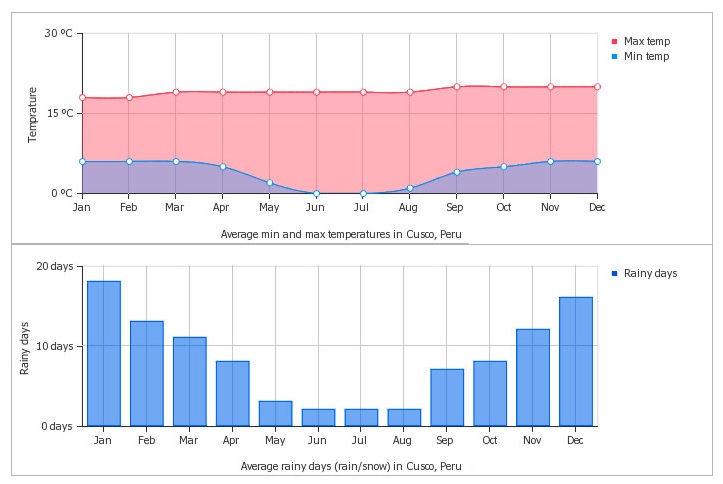
There are generally two seasons in Salkantay:
Mountain - Andean Climatic Zone: Andean climate is characterized by moderate to cold weather with rainy summers and very cold and dry winters. During days is usually warm, but nights are cold in summer and freezing in winter. Mountain roads and trails may get impassable during the wettest months (January to March).
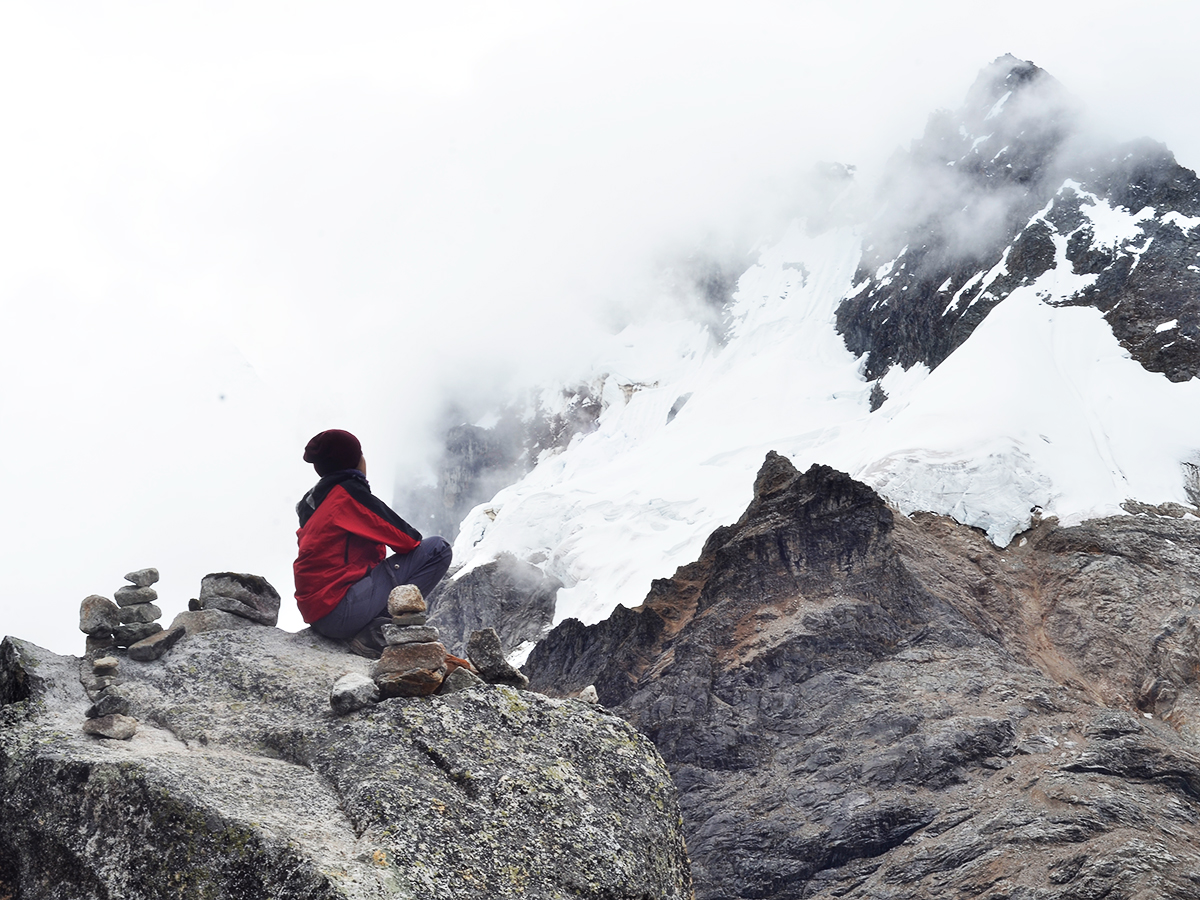
The Salcantay or Salkantay is a mountain in Peru, locates in the Vilcabamba mountain range, in the district of Santa Teresa, the providence of La Convencion, Department of Cusco. It rises to 6,271 meters above sea level.
According to some authors, the name of this mountain is a contradiction that comes from Salqa (a word in Quechua that means unsociable or wild, and Antay which means producing cloudscape and avalanche. People use to call it Apu which in Quechua means lord.
The trek to Salkantay is one of the access ways to get to Machu Picchu. Unlike the 4 day Inca Trail which is mandatory to hire an agency that has a daily quota as its overcrowding, the trek to Salkantay allows you to trek it on your own without quotas and overcrowding.
The trek follows the access to Machu Picchu. That is the reason why the main objective is to arrive in Aguas Calientes to have the chance to visit Machu Picchu the next day. The access to Aguas Calientes is made from the Hidroelectrica (a complex energy supply to the Cusco Valley). There are two ways to get to Aguas Calientes from the Hidroelectrica: One by train that costs 15 dollars and lasts about 50 minutes, and the other one is walking along the same route as the train, 10 km (2 hours and 15 minutes) approximately.
The start point of the trek takes place in Mollepata. To get there you either hire private transport or you take public transportation. It takes about 2 hours to get to Mollepata and from there you need to go to Soray Pampa.
Salkantay Trek Weather is sunny during the day, but cold during the night. The temperature drops below 0°C at night from June to September. The rainy season is from December to March. The best weather time to make the trek to Salkantay is from June to September.
If you decide to travel in the rainy season we recommend you bring warm clothes to prevent getting sick. The landscapes and the scenes that you can see throughout the 5 days that this trek last are wonderful due to the variety of micro-climates. On the first and the second day, you will be between 4,200 MAMSL and 4,600 MAMSL. The predominant vegetation will be the ichu (a native plant from the Andes) due to the climate.
The geography is difficult and hard in all the outlines of this attractive mountains complex. The Salkantay is surrounded by deep valleys and ravines and this makes its route interesting but exhausting at the same time. Although the difficulty in this trek is superior to the Inca Trail, it is not a high-level trek. It is longer (5 days instead of 4), more high more savage but that is the reason why is so interesting.
This trip combines cultural beauty and natural beauty, we will enjoy magnificent landscapes of the snow-capped Salkantay Mountain (6,264 MAMSL/20,551 feet), considered the most representative mountain of the Vilcabamba mountain range. This trek takes us to the Inca times and makes us aware of the mountain spirits, The Apus. Finally, our trip ends in one of the 7 wonders of the world, Machu Picchu.
This is a fantastic adventure! You will cross one of the most astonishing Andean landscapes and will have the opportunity to observe very beautiful scenery with mountain ranges. In addition, through a great variety of habitats and environments, you can see the top of the mountains covered with snow, and then you will get the chance to see the rainforest.
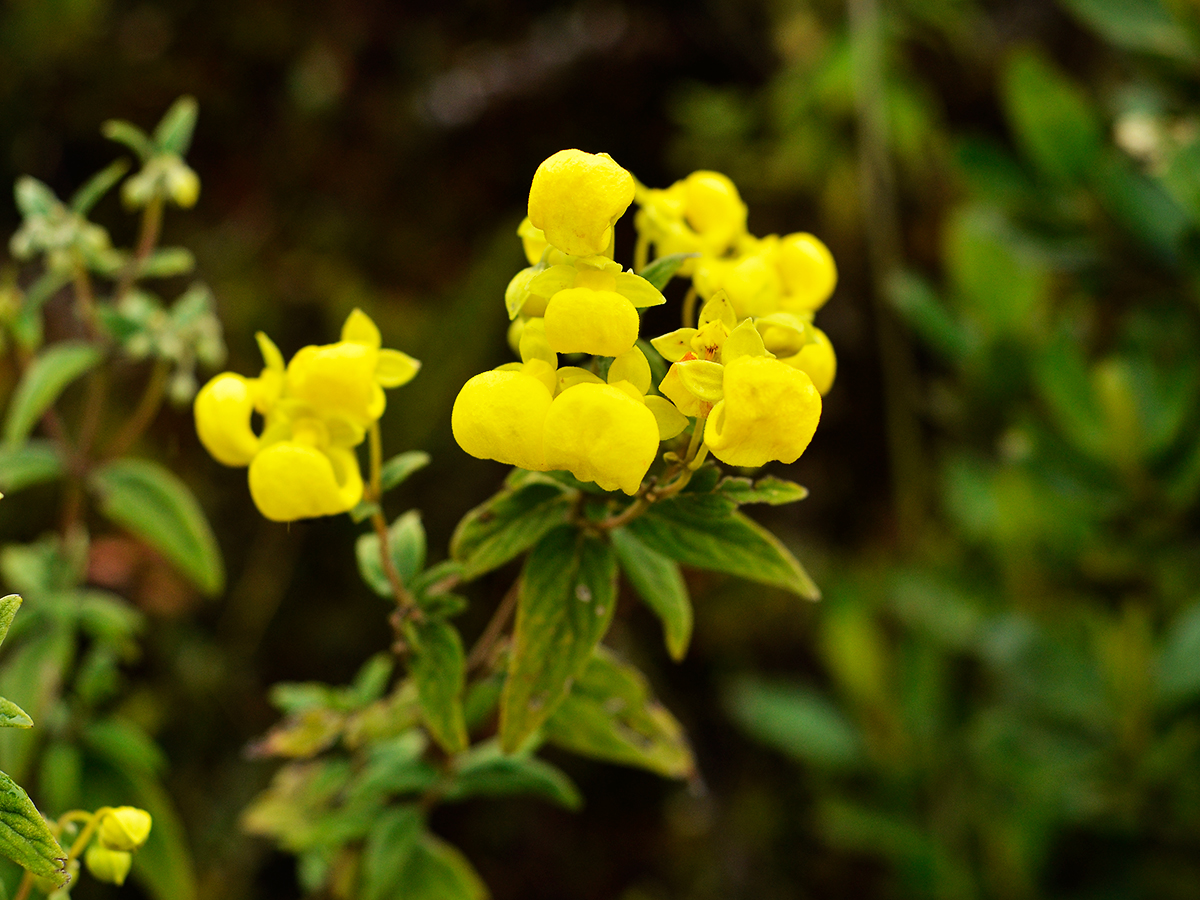
The best time for hiking around Machu Picchu is in the dry season from May to September. However, June to August are quite cold months at night. March, April, October, and November are warmer but rainy. The Inca Trail tours are closed in February due to maintenance of the roads. Below you can find the lists of the top best Inca Trail tours:
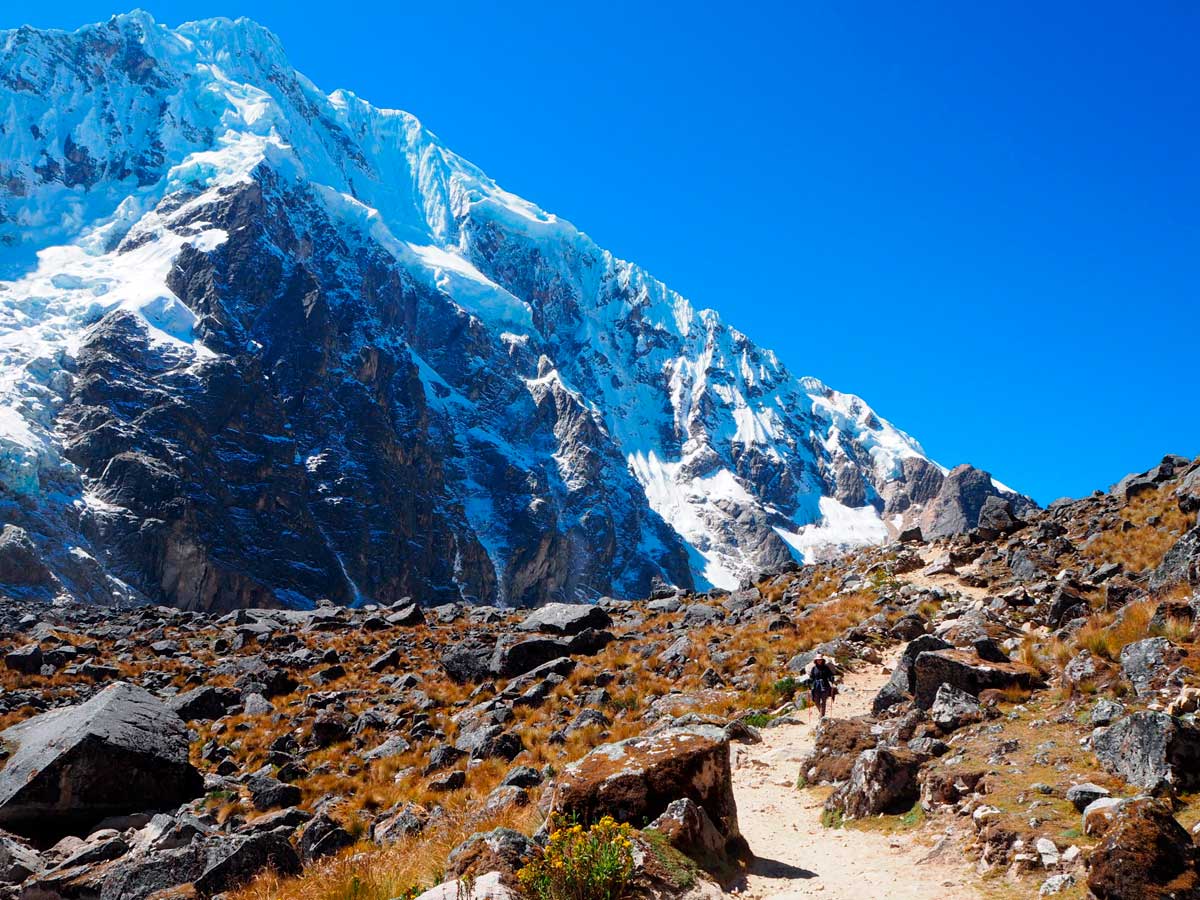
The Salkantay Trek in Peru is one of the most beautiful hikes in South America. In fact, this trek was voted one of the twenty-five most beautiful hikes in the world by National Geographic. During the four- or five-day hike you will discover the rugged landscapes of the Andes. After 70 kilometers of hiking, you will reach the 600-year-old Inca city of Machu Picchu and look out over the green peaked mountain range. Wondering what to expect during the Salkantay Trek? Here we share our experience and all the tips you need to know to be well prepared for your adventure.
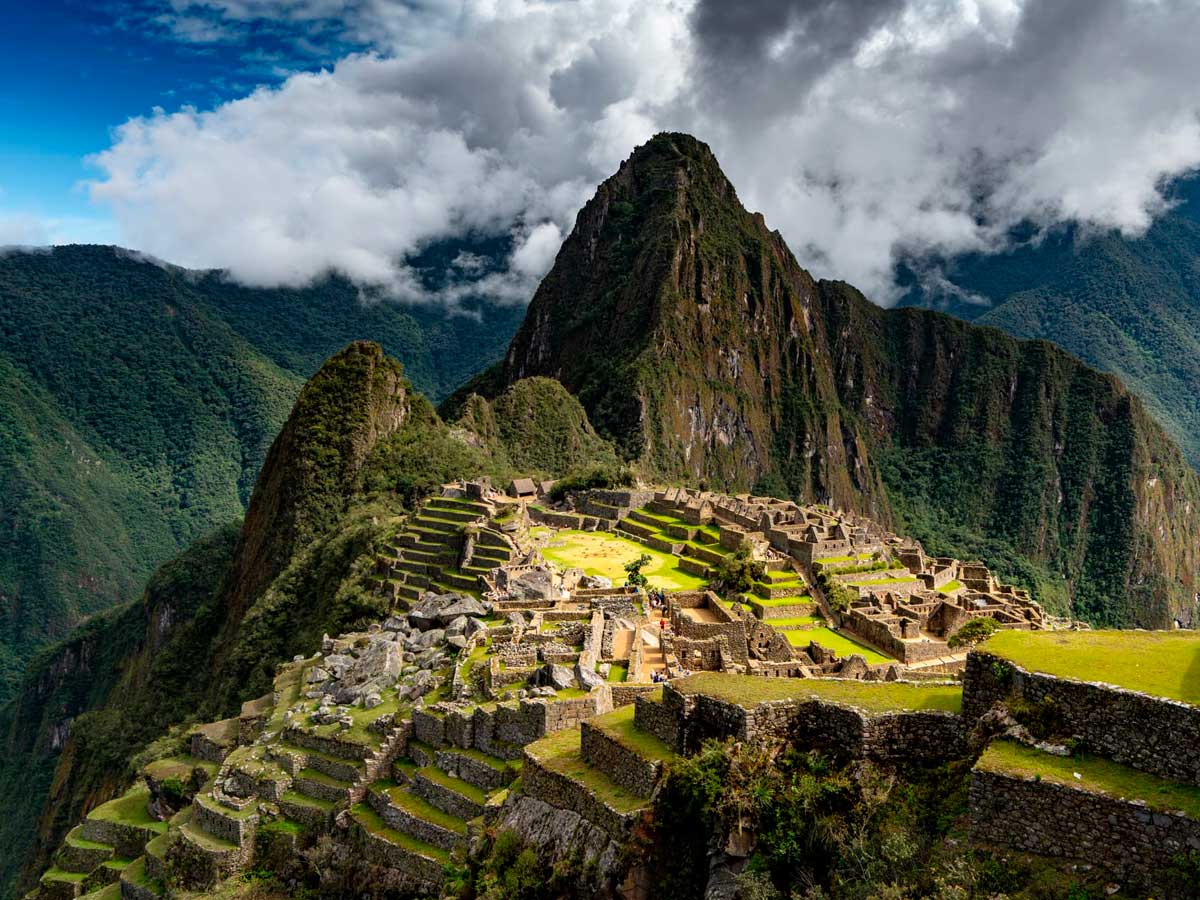
The ancient Inca city of Machu Picchu is located at 2,240 meters in the Andes Mountains in southern Peru. When you walk around it, you only realize what that altitude entails. Construction of the ruined city began in 1420, after which it was inhabited by royal families and other dignitaries until 1532. At the end of that period, life was abruptly disrupted by the invasion of the Spaniards. There was no more habitation and Machu Picchu became buried under the growth of nature. The city fell into oblivion and was not rediscovered until 1911 by the American explorer Hiram Bingham. Even after this rediscovery, the city remained deserted for a long time. In 1983, Machu Picchu was included on UNESCO's World Heritage List. Since then, the city has attracted some one and a half million visitors annually.
For the Salkantay Trek to Machu Picchu, you can choose between a four- or five-day hike. The five-day trek is the most popular. Here you have time along the way to do several additional activities such as ziplining and visiting the hot springs. If you prefer to continue to the top of Machu Picchu in one go, choose the four-day hike. You'll feast your eyes anyway, as the route is virtually the same and so are the costs.
The Salkantay Trek to Machu Picchu is a unique trek unlike any other in the world. The diversity of landscapes is breathtakingly beautiful with blue lakes, glaciers and a tropical rainforest. The first day and a half of the hike is quite strenuous as you climb to Salkantay Mountain. This mountain has an altitude of up to 4,630 meters. Because of this altitude, you notice that you are out of breath quickly and your muscles sour quickly. The first night you sleep at an altitude of 4,000 meters. Dress warmly with many layers because it can get very cold this night.
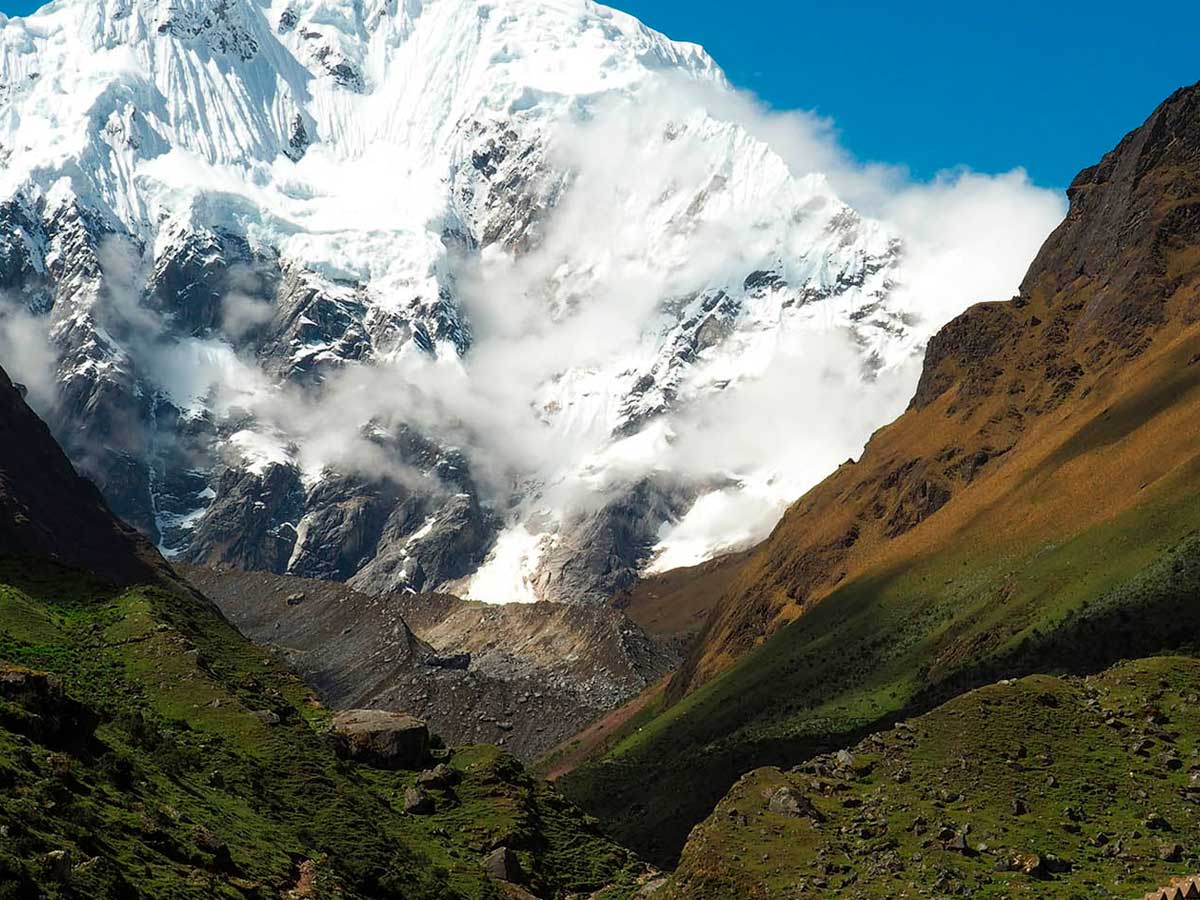
From the highest point you descend over 2,500 meters through the jungle to the village of Aquas Calientes. The guides have a lot of knowledge about the history of the Incas, the environment and the fauna and flora. Along the way you will have regular breaks, the guide will use these moments to talk about everything and answer your questions.
Want to know what the Salkantay Trek looks like from day to day? We've created a daily schedule for you to understand the route, accommodations, climbs and activities each day. Times and accommodations listed may vary by organization.